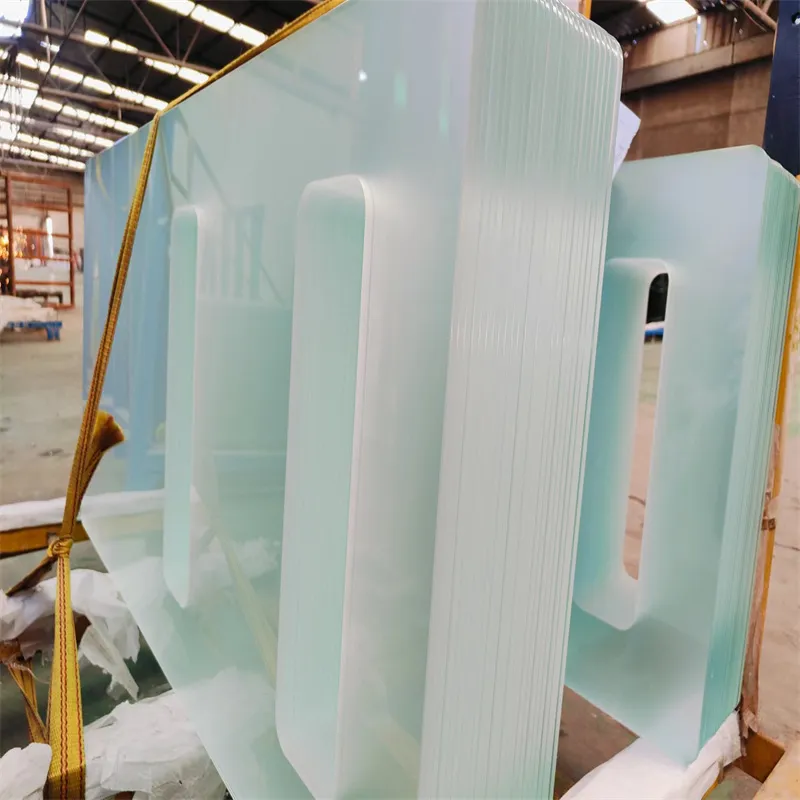Dec . 17, 2024 13:11 Back to list
Exploring the Benefits and Applications of Tempered Glass in Modern Design
Understanding Tempered Glass A Modern Marvel of Engineering
Tempered glass, also known as toughened glass, has become an essential material in various applications, ranging from architecture to automotive industries. Its superior strength and safety features distinguish it from regular glass, making it a preferred choice for both residential and commercial projects.
What is Tempered Glass?
Tempered glass is made from regular glass that undergoes a specialized heating and cooling process. Initially, the glass is heated to temperatures ranging from 600 to 620 degrees Celsius (approximately 1112 to 1148 degrees Fahrenheit). Following this, the glass is rapidly cooled in a process called quenching. This rapid cooling creates compressive stresses on the surface of the glass, significantly increasing its strength. In fact, tempered glass is about five to six times stronger than standard glass of the same thickness, making it highly resistant to impact and thermal stress.
Benefits of Tempered Glass
One of the most significant benefits of tempered glass is its safety features. When broken, instead of shattering into sharp, dangerous shards like regular glass, it breaks into small, blunt pieces that are less likely to cause injury. This characteristic makes tempered glass ideal for applications where safety is a priority, such as in shower doors, glass rails, and windows.
Moreover, tempered glass can withstand extreme temperature variations, making it suitable for environments that experience fluctuating temperatures. This durability ensures that the glass maintains its integrity even in demanding conditions, such as in commercial kitchens or near fireplaces.
glass tempered glass

Another benefit is the aesthetic appeal of tempered glass. It can be produced in various thicknesses and finishes, including frosted, tinted, or clear varieties, offering versatility in design. This enables architects and designers to utilize tempered glass creatively, enhancing the visual appeal of buildings, facades, and interior spaces.
Applications of Tempered Glass
The applications of tempered glass are vast and varied. In architecture, it serves as a crucial component for facades, skylights, and curtain walls, allowing natural light to penetrate while ensuring strength and safety. In the automotive industry, tempered glass is commonly used for side and rear windows, where impact resistance is vital for passenger safety.
Additionally, tempered glass plays a crucial role in the manufacturing of glass doors, coffee tables, and protectors for electronic devices. Its ability to endure scratches and resist breaks makes it an excellent choice for storefronts and display cases, where visibility and durability are essential.
Conclusion
As the demand for durable and safe materials continues to rise, tempered glass stands out as a modern solution in various fields. Its impressive strength, aesthetic versatility, and unmatched safety features make it an increasingly popular choice among builders, designers, and consumers. Whether it's enhancing the beauty of a home, providing safety in vehicles, or serving practical functions in various environments, tempered glass is a testament to human ingenuity and innovation in engineering. As we continue to push the boundaries of design and functionality, tempered glass will undoubtedly remain at the forefront of modern materials, reshaping our spaces for years to come.
-
Safety and Style with Premium Laminated Glass Solutions
NewsJun.24,2025
-
Reinvents Security with Premium Wired Glass
NewsJun.24,2025
-
Premium Float Glass Line for Modern Architecture
NewsJun.24,2025
-
Low Emissivity Glass for Energy-Efficient Architecture
NewsJun.24,2025
-
High-Performance Insulated Glass Solutions for Modern Architecture
NewsJun.24,2025
-
Elevates Interior Style with Premium Silver Mirror
NewsJun.24,2025
Related PRODUCTS














